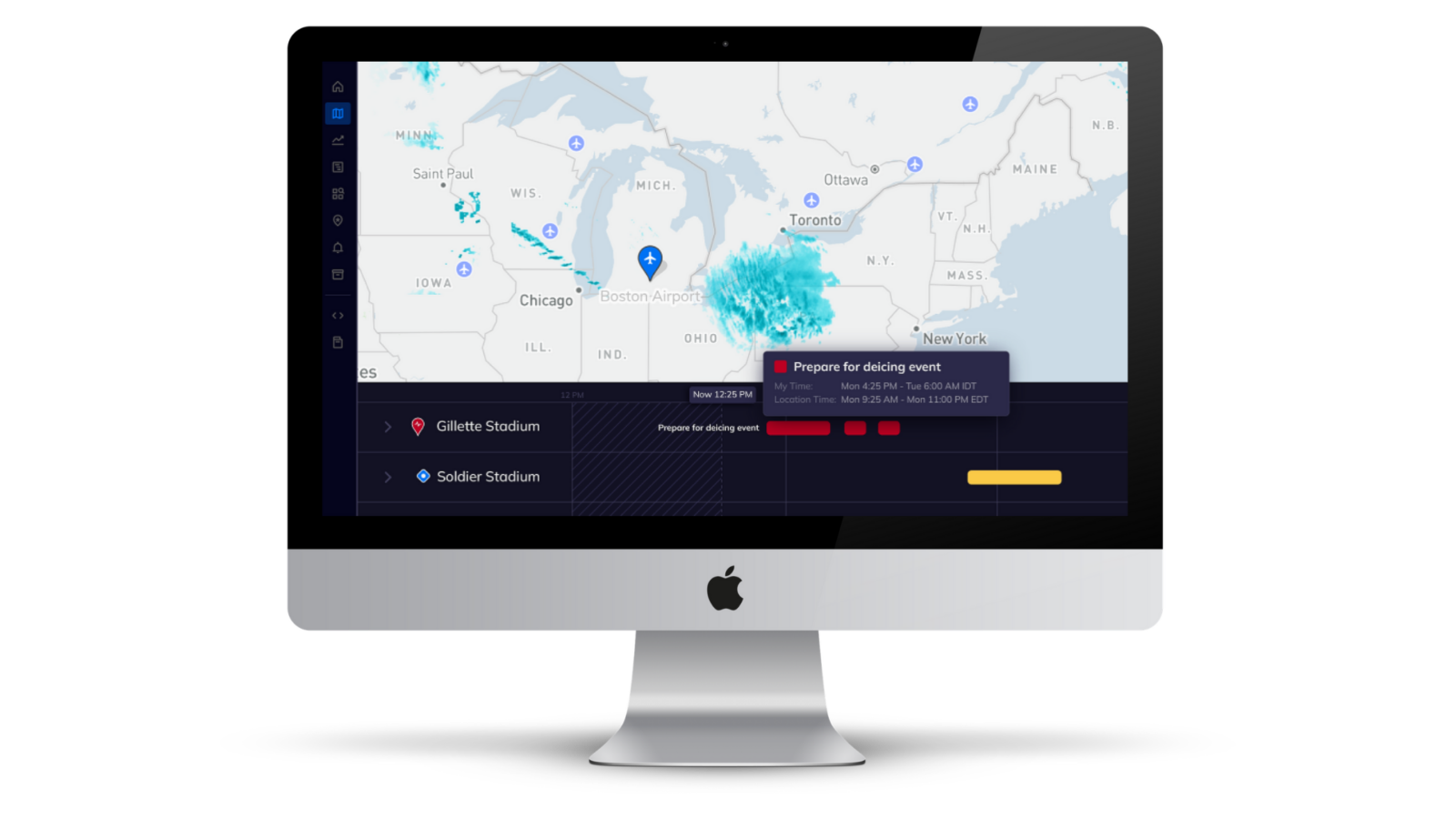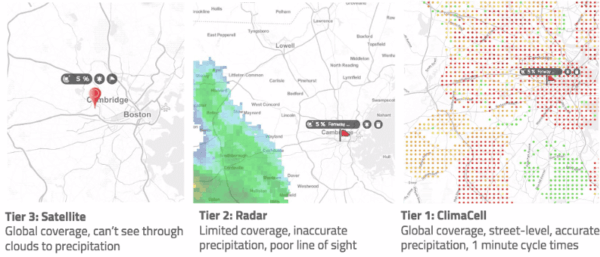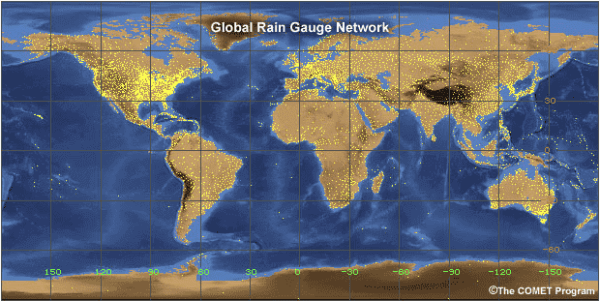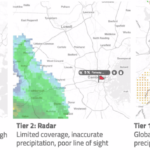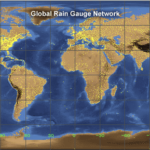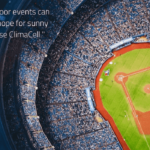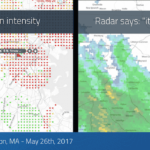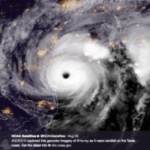The weather has a direct impact on the way we live, work, and run our businesses.
Many of us react to conditions as they unfold, but waiting for weather to arrive can have serious consequences for businesses. That’s why weather forecasting services are so important. By predicting what’s ahead, leaders can make more informed decisions to protect employees, reduce losses, and stand out from competitors.
Here’s a look at the current state of weather forecasting services, including game-changing innovations like weather intelligence:
What Are Weather Forecasting Services?
At the most basic level, weather forecasting services provide information about future weather conditions to interested stakeholders, including the general public, businesses, and governments. Weather forecasting services use data from a variety of sources, including satellites, radar, observation stations, and computer models, to prepare their forecasts, which are typically delivered on a daily or weekly basis. They also consider factors such as the time of year, the prevailing weather conditions, and historical data to make their predictions.
Why Are Weather Forecasting Services So Important?
By warning of future weather before it happens, weather forecasting services provide critical information that can help stakeholders to prepare for and respond to a range of conditions. At the consumer level, this information empowers individuals with a range of value from basic day-to-day guidance on what to wear all the way to potentially life-saving information around severe weather events.
For businesses, weather forecasting services act as critical decision-support tools in taking more informed operational actions based on the weather. From logistics and aviation to agriculture and insurance, the weather has a significant impact on employee safety, asset vulnerabilities, and overall business performance. This intelligence is becoming even more important for businesses as worsening climate change makes extreme weather events more intense and frequent.
Types of Weather Forecasting Services
There are a variety of weather forecasting services on the market today. Key differentiators among them include:
- Purpose: Certain weather forecasting services are designed exclusively for consumers and typically provide more short-term planning. Others are purpose-built for enterprise users and include more robust, business-oriented offerings.
- Data Sources: Where each service gets their data can vary widely. Some may only use governmental observations, while others leverage a combination of satellites, radar, and proprietary models. And while all are ultimately based on predictions, the data sources used can have a direct impact on accuracy.
- Coverage: Some services only provide forecasts for a limited area, while others provide nationwide or global coverage.
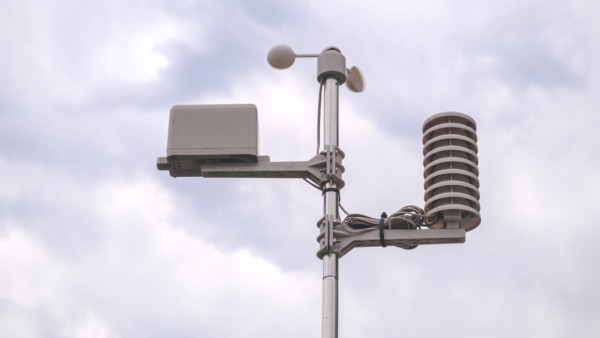
Some services use physical weather stations to collect ground-based observations, which they then incorporate into their forecasts.
Government Weather Forecasting Services
Governments across the world invest in their own weather forecasting services to ensure public safety, economic health, and more. In the U.S., this comes from the National Weather Service (NWS), which is part of the National Oceanic and Atmospheric Administration (NOAA). NOAA operates weather stations across the country, as well as a fleet of weather balloons and satellites.
This data is then used to generate forecasts for the entire country. In addition to the NWS, many states have their own weather forecasting services. These services often get their data from the NWS and may also have their own weather stations, allowing for more localized forecasts.
How Weather Intelligence Is Different
Weather intelligence draws on a number of data sources, including those from NOAA and proprietary numerical weather prediction models, and extracts only the most valuable from each. Having access to multiple forecast products and observations allows for a more granular look at historic, real-time, and forecasted conditions across 80+ data layers.
See the precision of weather intelligence ->
Traditional Weather Forecasting Services
Governmental sources only account for a fraction of available forecasting services on the market. Another segment includes traditional weather forecasting services, which rely primarily on repackaged government data to predict future weather conditions. These services typically deliver forecasts via website, mobile apps, and through third-party providers.
How Weather Intelligence Is Different
Weather intelligence goes beyond traditional forecasting by turning conditions into actionable insights. Rather than simply stopping at a “40% chance of rain,” complex event processing capabilities allow weather intelligence users to generate insights that let them know what action to take and when based on minute-to-minute forecasted conditions.
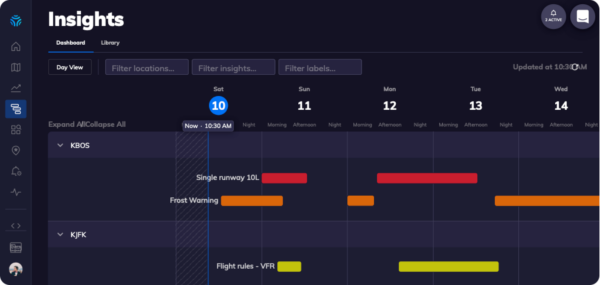
Tomorrow.io’s Insights Dashboard lets industries like aviation know when to expect unfavorable conditions so they can take proactive action.
Explore insights for your industry ->
In-House Weather Forecasting Services
An increasing number of businesses are also making use of in-house meteorologists, as weather and climate security becomes a top investor priority. These experts are tasked with providing tailored forecasts that take into account specific business needs. Depending on resources, in-house meteorologists may reference a variety of models and/or other external services to make their predictions.
How Weather Intelligence Is Different
In-house meteorologists can’t be effective without the right tools. Not implementing automated, predictive weather systems is the equivalent of relying on manual methods to protect your company against cybersecurity threats—an unfathomable thought. Weather intelligence support extends in-house meteorologists’ impact with multi-location monitoring and automated insights to make more informed decisions faster.
Empower your in-house meteorologists with the right tools ->
Go Beyond Forecasting Services With Weather Intelligence
As climate change worsens and weather becomes more volatile, the need for innovative weather technology has never been greater. Extreme weather and climate disasters killed 688 people and cost more than $145 billion in 2021 alone.
Weather forecasting services alone won’t protect your organization in a scalable way: now is the time to adapt with automated, predictive systems.
See How Weather Intelligence Can Help
